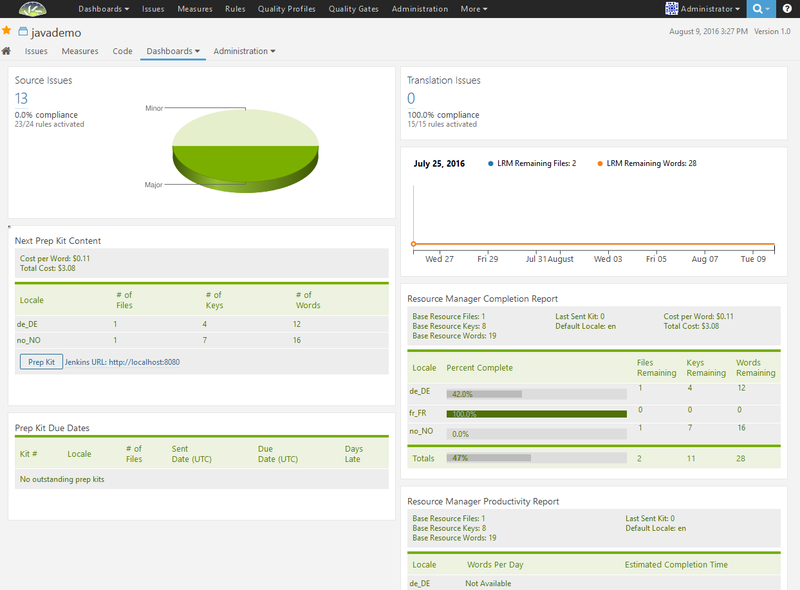Components Diagram
Contents
A Typical Deployment
- Code and Resource files are stored in repositories such as Subversion or Git.
- LRM creates projects for the Resources files and tracks their status using the LRM Database.
- LRM can track when entire resource files need to be translated for example when there is a new language. Or when only changes from the previous translations need to be translated.
- LRM bundles files to be translated into prep kits that can then be given to translation vendors.
- Jenkins is used to automate the scripts to perform many of these tasks.
- The Lingoport Dashboard is used to with LRM reports to illustrate the translation status of all projects and if translations are due.
LRM using Jenkins for automation and the LRM Database creates projects to track translation and code changes.
The following diagram describes a typical deployment for LRM. The LRM system must have access to the LRM projects' repositories and the translation endpoints.
File:LRM_Deployment_Diagram.jpg
Repositories
Two repository types, SVN and Git, are supported out of the box. Many more can be added to the framework depending on the requirements, provided the repository types support command line calls. To configure the repository for a project once the LRM system has been installed and configured, please refer to this section: Project Configuration Files.
The config_vcs.properties file defines the project repository configuration.
LRM System
LRM
LRM is composed of a number of jar files and configuration files. To install and configure LRM, please refer to the LRM Installation section.
Jenkins
Jenkins is an open source automation server that orchestrates the different tasks and automates a number of LRM tasks by calling scripts. To install and configure Jenkins, please refer to these sections:
Lingoport Dashboard
The Lingoport Dashboard is composed of two parts, the Dashboard Server and the Dashboard Client. They can be set up on different systems if necessary.
Dashboard Server
The Dashboard server is a Web application and must be network accessible to the stakeholders, for instance development teams and management, localization managers, QA, and/or translators. It shows the status of the project.
Dashboard Client
LRM can create a number of reports regarding the status of projects and translations.
The Dashboard Client uses the results of LRM reports to push information to the Dashboard Server to illustrate translation status by locale.
Translation Systems
LRM connects seamlessly to translation systems. Out of the box, Lingotek and FTP are available. WorldServer can be added. Other translation systems may require some custom work to add to the framework without changes to the core installation.
A translation system is typically set for an entire group of projects and can be specified for individual projects as well, using the config_l10n_vendor.xml file located either in the group or the project config directory:
Lingotek
Lingotek provides a SaaS translation management system. To configure a project to send files back to forth to Lingotek, please refer to this section: http://wiki.lingoport.com/index.php5?title=Group_Configuration_Files#config_l10n_vendor.xml
FTP
A file transfer protocol (FTP) endpoint for outgoing files and one for incoming files can be configured. The files sent and received must conform to a naming and a structure convention. To configure a project to send files back and forth to FTP, please refer to this section: http://wiki.lingoport.com/index.php5?title=Group_Configuration_Files#config_l10n_vendor.xml
